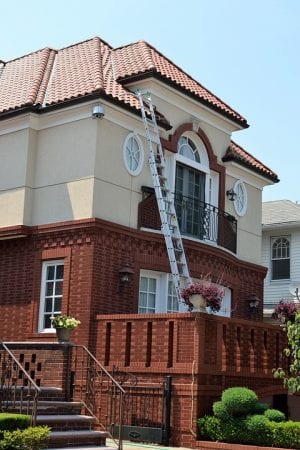 The purpose of a professional home inspection is to check the foundation, frame, trim elements and mechanical systems for defects, breakages or wear of materials, as well as any damage from adverse weather conditions, for example rotting. Regular technical inspection of the house will help you determine what needs to be repaired in order to prevent serious problems in the future.
The purpose of a professional home inspection is to check the foundation, frame, trim elements and mechanical systems for defects, breakages or wear of materials, as well as any damage from adverse weather conditions, for example rotting. Regular technical inspection of the house will help you determine what needs to be repaired in order to prevent serious problems in the future.
Checking the house consists of monitoring the water supply, safety, ventilation and air conditioning systems. For example, the main task of ensuring safety on the site is to drain the gutters away from the building. The next step is to inspect the tracks, you need to make sure that there are no cracks in them and you can walk on them without risk of injury.
Checking the foundation
The first thing you need to pay attention to is a survey of its foundation. Practice shows that this is the most important constructive element on which the durability of the home depends. Most of the “sores” in the future, such as the appearance of cracks, high humidity and water ingress, increased wear of the construction and decoration, are manifested precisely because of poorly constructed foundation.
First, look through the semi-passages and basements for the penetration of water into the cracks of the foundation under the walls. If water seeps through walls below the surface of the earth, then this indicates problems with drainage outside the house. Check the foundation and retaining walls.
The presence of cracks
Microcracks in concrete can be cosmetic (come as a result of subsidence of the foundation), but they should still be checked. V-shaped cracks (narrowing to the bottom) or cracks in the entire length of the wall are most likely caused by uneven subsidence of the soil and will only become worse with time. If the floors in the floor cracked or went up, this indicates a rise in the groundwater table. In this case, the drainage pipes need to be replaced in order to prevent the consequences.
Drainage and drainage system
If there is a groundwater pump in the house, then perhaps you will encounter a drainage problem. Check the foundation around the perimeter for potholes and bare areas from erosion, indicating that the flow of water to the site is greater than that which can absorb the soil. With increased soil moisture, installation of a drainage system will be required.
The drain must be laid at least three meters from the foundation of the building. To do this, drain the pipes of the drainage system using drainage blocks or drainage pipes. The system should be set aside from the house. Bad drainage can lead to the accumulation of hydrostatic pressure near the walls, which can cause the walls to blow in the basement or to water erosion and weaken the foundation of the house.
Rotting of a tree
Using a screwdriver or an awl, look at the section of the carcass of the house for rotting and decomposition. Rotting can be caused by mold fungi or waxing of termites. Check the terrain around for termite contamination. Termites leave on the ground specific traces – small craters of mud. Also, termites easily lose their paws, so a bunch of paws nearby will be another hint for you.
Exterior walls
Check the external walls for structural integrity, reliability of fastenings, as well as signs of rot and moisture penetration. Look at the functional drainage holes in the brick and brick lining. Examine the cracks in the plaster, this will help you determine if the plywood sheathing is behind it. Remember that cracks in the plaster of any size lead to moisture. When checking the external insulation, use a moisture meter to determine the presence of moisture behind it.
Checking the facade
The appearance of the house can tell about many potential problems that you will face.
Distribution of plants
Perhaps, the tree casts a big shadow on the house, so that molds and rot can not be ruled out on the walls. The trees and bushes growing near the cottage are capable of leading to the invasion of pests, so they should be removed.
Problems with walls
Any signs of swelling or the slopes of the outer walls indicate a problem with the fasteners. They can be deformed if water penetrated the wall and reacted with the tree.
Roof Inspection
Be sure to check all the main elements of the roof.
Surface
To inspect the surface of the roof, you will need a ladder and binoculars. So you can find missing or damaged tiles, as well as clogged drains. Inspect the insulation of all holes on the roof for wear. Check if there are any curved, swollen or wavy places on the roof, as this indicates problems with the frame.
Sewage
Check the gutters and pipes for leaks or cracks. Make sure that there are no leaves or other debris that prevents drainage. Covers on the chutes protect them from clogging debris – and completely free.
Exterior walls
Check the integrity of the external siding, the reliability of their securing, as well as for signs of rot or water penetration. Are the drainage holes blocked in veneer and masonry? Look for cracks in the plaster – moisture can penetrate through the expansion of wood. Walk on the outdoor thermal insulation system with a hygrometer to check invisible areas behind the wall surface.
Picture Credit: ArtisticOperations



